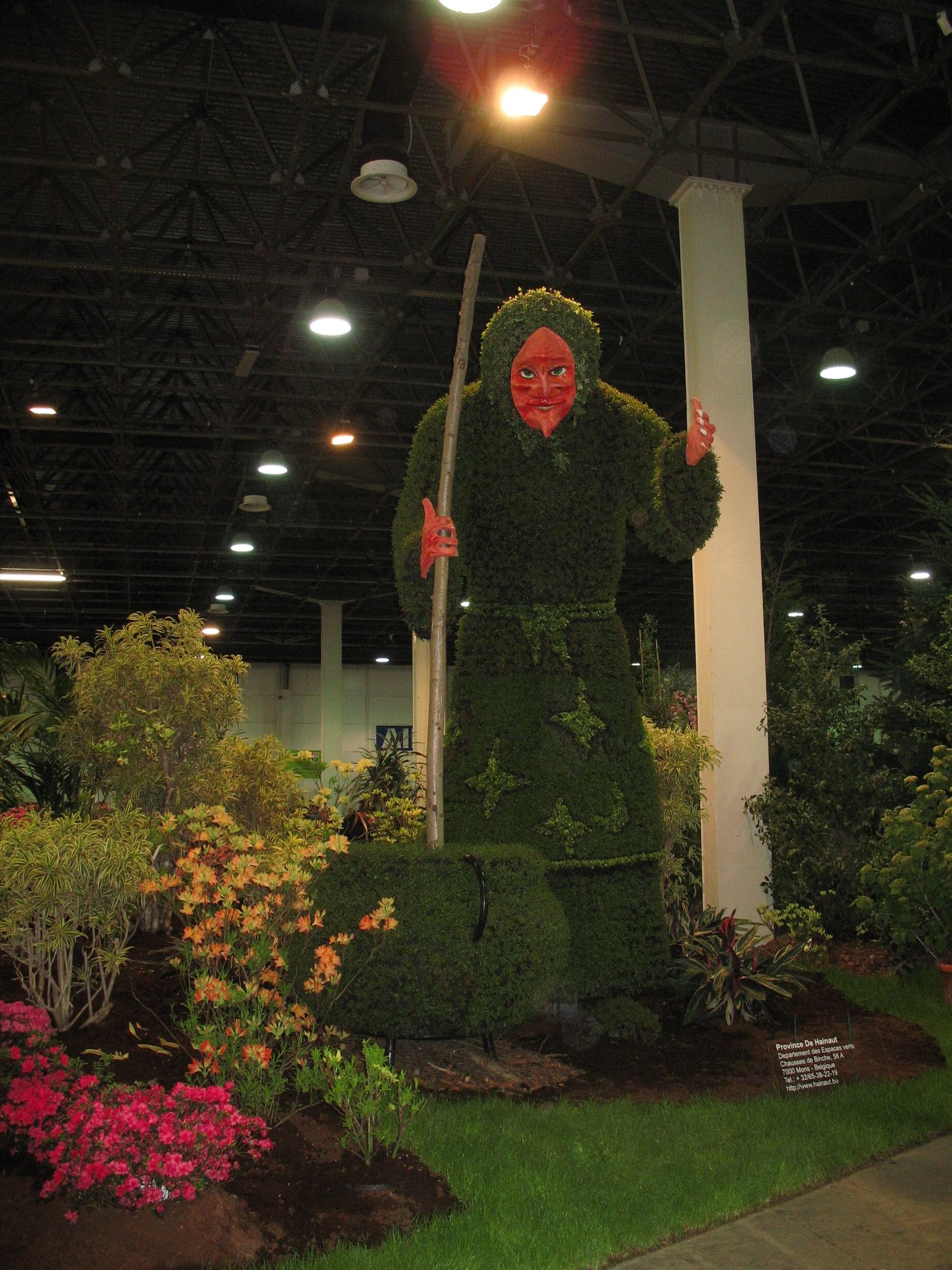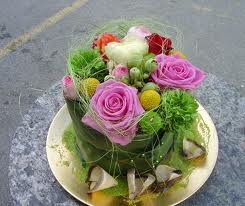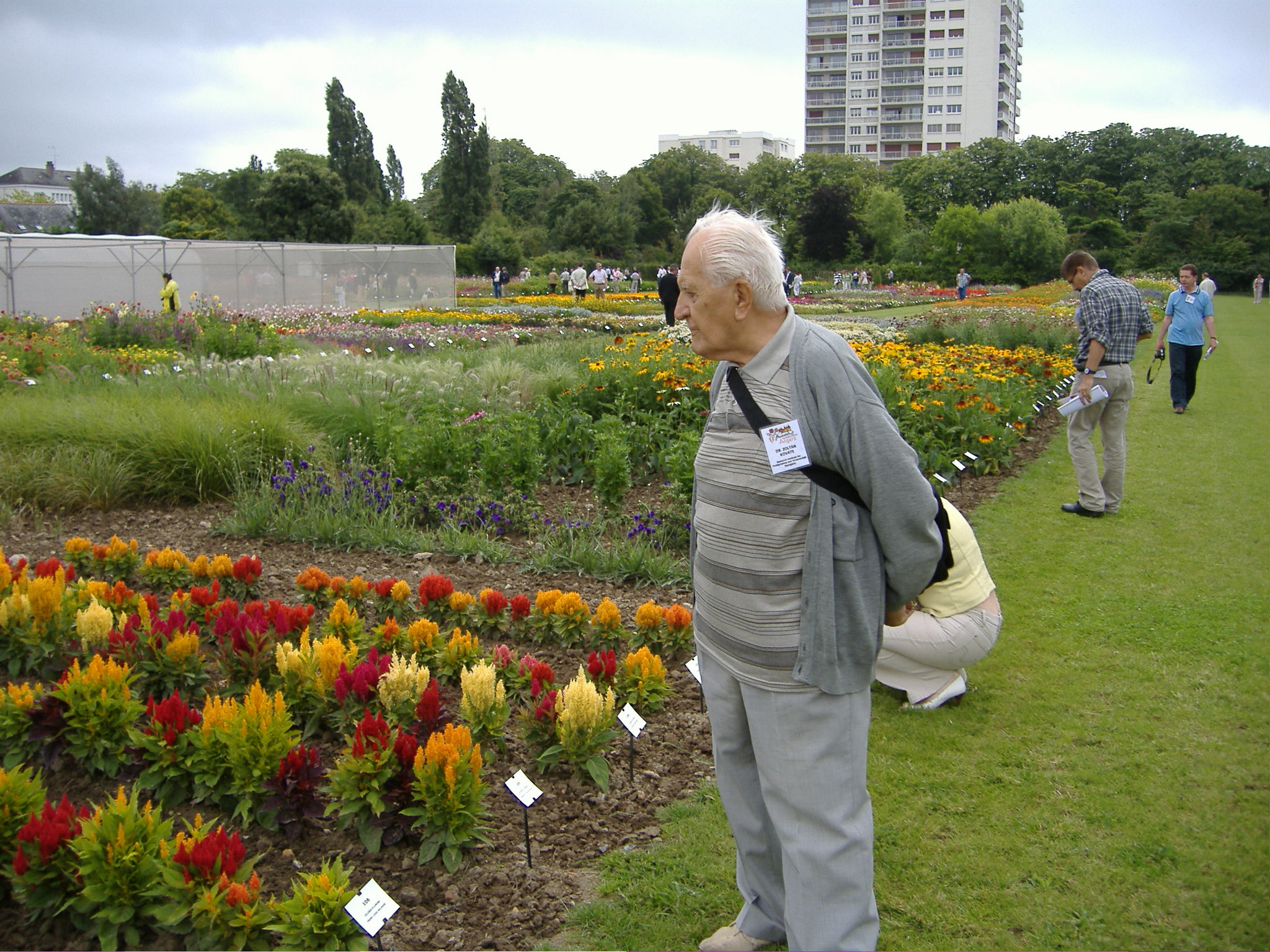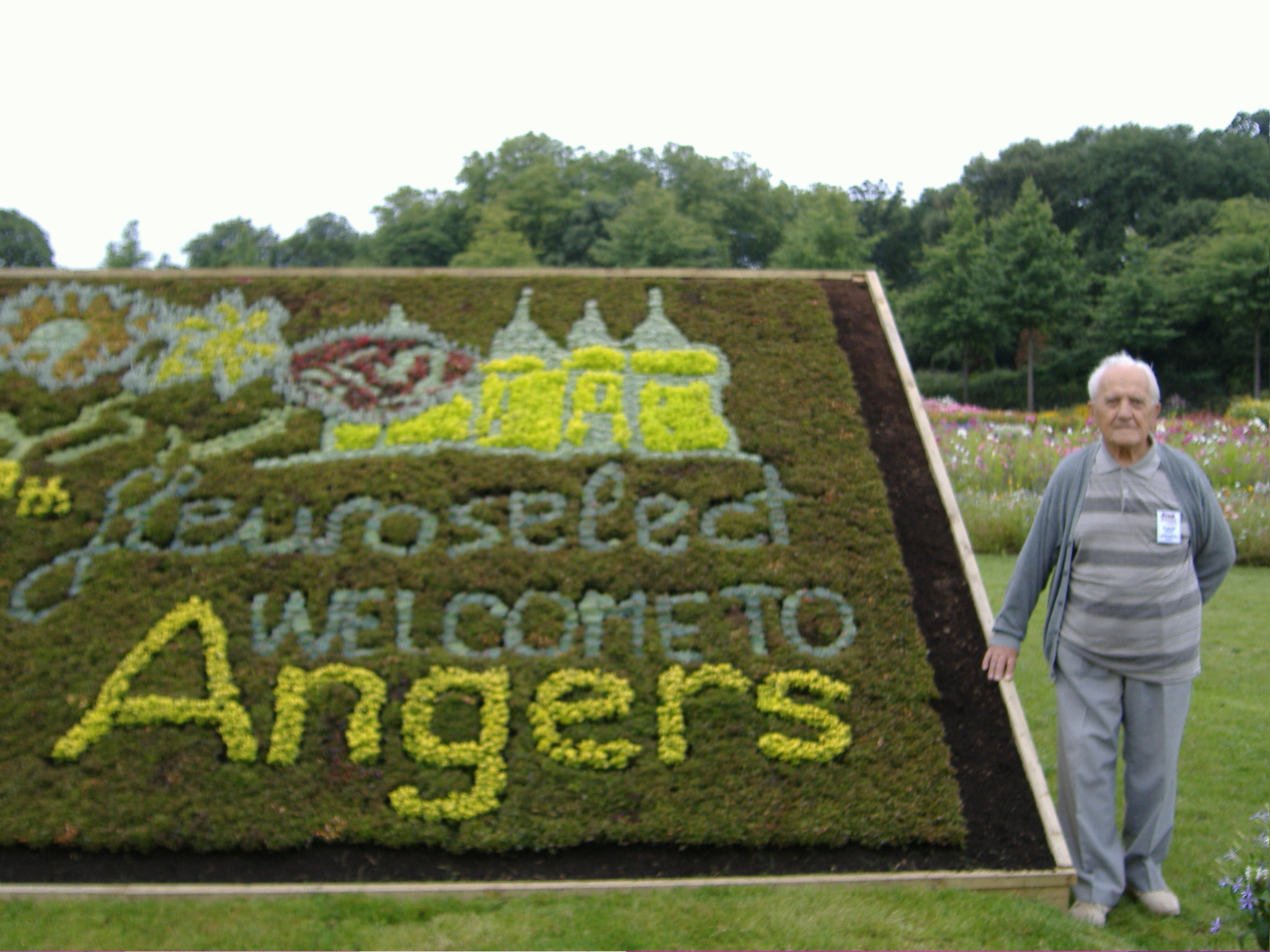2. Advocacy system of ornamental plant production and trade in Hungary and in the European Union
Authors: Andrea Tilly-Mándy, Márk Steiner
Globalization affects on ornamental plant sector substantially. Breeding, production of propagation material, growing and trade of ornamental plants are made by international companies, which are unavoidable. Smaller countries have to fit to this system, whereas they are not able to purpose their own interests. Thus, national and international organisations are needed to maintain the enterprises in the sector, and help them to work and compete. Ornamental plants are liberalised products, their production is not internationally regulated, but they do not receive support from EU. This is the reason why more and more non-governmental organizations (NGO) are established, because their members have a better chance to win together a tender.
2.1. International organisations
2.1.1. AIPH (International Association of Horticultural Producers – acronym after the French term)
(www.aiph.org)
It was founded in Switzerland in 1948 by the following countries: Switzerland, France, Germany, Austria, Benelux countries, United Kingdom, Hungary and Sweden. Their aim was to stimulate international marketing of ornamental plants and landscaping services. Till the late nineties, three languages (French, German and English) were used officially then English becomes the single one. Currently, it has 64 members including Hungary, too. Member countries pay membership fee after their volume of horticultural production. Hungary pays 500 Euro annually. One of the spearheads of AIPH is to ensure the exchange of experience and knowledge in order to enhance the trade of ornamental plants as it possible. It is realized by the meetings at the annual Congress and theme sessions. Furthermore, the roles of the Association are the monitoring of the growing tendencies around the world and awarding of prizes to professional recognition. Such prestigious prize is the Grower of the Year Award. Growers are checked very strictly according to 10 criteria focusing for example on education and training for personnel, relation to personnel, environmentally-friendly production and packing and supporting of research programmes. Nowadays, its major aim is the innovation of growing and research. Hungarian Ornamental Plant Association and Commodity Board tries to follow the good example, and the Hungarian Grower of the Year Award has been given in Hortus Hungaricus International Horticultural Exhibition for a few years. The most important AIPH publication is the yearbook containing statistics on production and trade systemized according to plant products and countries. Thus, growers and traders can follow up the changes and tendencies of the sector. Hungary also reports data to the yearbook, but they are unreliable. AIPH works in close co-operation with the International Flower Trade Association, Union Fleurs. The organization represents the participating countries in discussions with the international bodies like the International Bureau on Exhibitions (BIE), Convention on International Trade in Endangered Species (CITES) and International Union for the Protection of New Varieties of Plants ( UPOV).
Structure of AIPH : The most important forum is the Council. Its members are the President (currently Mr. Doeke Faber) and the Secretary General (both elected and nominated by the Council, and additionally each member-organization is represented by one person. Executive Committee is under the command of Council and formed by the President, the Secretary General, the chairman from the standing committees and eight members representing seven regions. Its role is the enforcement of the decisions taken by the Council. Discussion on problems of ornamental plant sector, and the seeking solutions to them, courses in the standing committees. Six subdivisions cover the whole sector, each one have a standing committee. Every member countries have right to work in standing committees. Standing committees are the followings:
1./ Committee for Novelty Protection . AIPH pays attention to maintain good relationship between breeders and growers. It takes care that breeders and owners of variety do not misuse their property rights for the variety, and at the same time, it controls acces to the propagating material (illegal propagation). Nowadays, there is an increasing tendency amongst breeders to conclude exclusivity contracts with growers for production new, promising varieties. To realize balanced rights of the breeders AIPH maintains close relations with other organizations, too. It has contact for example with UPOV (International Union for the Protection of New Varieties of Plants), which is an international organization contracted to protection of new varieties, with CPVO (Community Plant Variety Office), which manages the system of plant variety rights in EU (seat in Angers, France) and with Ciopora International (International Association of Plant Breeders).
International examination of varieties in Angers (with dr. Zoltán Kováts Hungarian breeder)
Flower bed in Angers
2./ Committee for Marketing and Exhibitions . The aim of this committee is the supporting of sale and trade of ornamental plants with enhancement and development of marketing activities, and with organization of exhibitions. Of course, it reacts on production as well. At the same time, they monitor the results and the efficiency of exhibitions. Namely, flower exhibition is the most expensive, but also the most effective way of the marketing. Supported exhibitions are divided into four categories:
- International exhibition of long duration (at least 3 months, 6 months at most)
- International exhibition of short duration (at least 8 days, 20 days at most)
- National exhibition of long duration (including foreign participations, if so desired)
- National exhibition of short duration
Entente Florare European Competion for Towns and Villages (www.entente-florale.eu) is organised in every year with the assistance of the Committee. It has positive effect both on ornamental plant production and application of ornamental plants in public places (dísz.02.03-04). The Committee seconds the Plants for People initiative as well, which helps to make liveable environment. This movement gives an incentive to people to buy ornamental plants, as it emphasizes their positive effects on social climate as well as on work atmosphere, furthermore on human physical and the psychological conditions. The Committee decides to edit an international booklet entitled AIPH-Brochure more than just beautiful (AIPH-Brochure more than just beautiful.pdf ) to show politicians and the public the importance of flowers and plants on daily life for people and society.
Clever marketing plays significant role in sale, and moreover in the increasing of production. At international level, 30-40 % of the incomes are spent on marketing. This rate is notably lower in Hungary.


Gold coiun of Entente Florale and the international Jury 2012
3./ Committee for Economic, Statistics, Social Affairs, Financing and Taxes . Its most important task is the improvement of international collection and provision of data. The Committee publishes the Statistical Yearbook every year, which gives an optimal overall view on developments of production areas, sales and markets and consumption. In the person of András Treer, the Committee has Hungarian chairman. Each member-organization shall be responsible for the data published in Yearbook. Data provision is a problem area in Hungary therefore data are not accurate in the Yearbook.

Statistical Yearbook of AIPH
4./ Committee for Environment and Plant Health. For ornamental producing countries, like most of AIPH-members are, it is important that production and trade of cultivated crops as few as possible are impeded by regulations. The lists of CITES (CITES: Convention of International Trade of Endangered Species of wild flora and fauna. It is also known as the Washington Convention. It restricts the trade of protected species.) with plant varieties for which trading are prohibited contains also many cultivated varieties of ornamentals. It is in the interest of AIPH member to reduce that long list. For several years, the other topic of the Committee is the harmonisation of eco-labels (eco-label: trademark for environmentally friendly products). In several countries, in production as well as in trade, labels could be granted by different criteria. Minimum standards for eco-labels have been formulated by AIPH, which is recommended to member-organizations, but standardisation still has not been realized completely. Furthermore, Committee deals with genetic engineering, pesticides, maintenance of biodiversity, spreading of invasive species, waste management and packaging.


European ecolabel and the Ecolabel on the packaging of a cut flower
5./ Committee for Green City . Whereas the main task of AIPH is the subservience of production and trade of ornamentals, the search and establishment of new marketing channels is required. Green City movement, started in the last 10 years, and other initiatives are excellent opportunities for it. They try to play role in control of research and marketing in this area as well according to their slogan: People, Planet and Profit. They strengthen the initiatives of Green City, share resources and inspire people, organizations, city councils and government administrations to join this challenging movement and it also yields the profits.
6./ Committee for Science and Education . The main task of this committee is the strengthening and the overview of research and science. They try to combine forces at an international level in order to stimulate the international research projects in the floricultural sector, and to seek and find funds for financing them. They provide assistance to international co-operation in floricultural researches. They help to pass the results from science to the growers and traders in the floricultural sectors and thereby improve and enhance the implementation of these results. Finally, they stimulate actively the international exchange of research workers and scientists in the floricultural sector. Committee has great significance in education, too. It encourages the participation of students in horticultural training and school programmes, including universities, both at national and international level. It subsidizes the international exchange of students, the organisation of international training and education courses and hereby the flow of knowledge and the international movement of company employees and trainees.

Marketing illustration of green city (Amsterdam)
2.1.2. UF - Union Fleurs
The International Flower Trade Association (www.unionfleurs.org) was founded in Brussels in 1959. Its main purpose is to represent, promote and safeguard the international floricultural trade and the worldwide interests of traders of cut flowers, foliage and cut greens and pot plants. UF functions after the followings:
- It defends and promotes the matters of general interest to the international floricultural trade.
- It supports the visibility of floricultural sector and a favourable trading environment.
- It protects and represents the interests of international floricultural trade at international forums and against international bodies and authorities worldwide.
- It exchanges, collects and distributes information on the world floricultural market.
- It provides a networking platform where members can meet and exchange experiences.


Recognition of Fair Flower, Fair Plant award, and the logo in the trade
The Association lobbies in earnest, provides the free world floriculture trade, stimulates the research, promotion and marketing projects. For example, if the turnover of a product decreases, they try to stop it with innovation.
UF introduced the FFP label (“Fair Flowers – Fair Plants”). It means a strict control of marketed ornamentals. For example, the following areas are examined in a grower or trader company: how correct is its business policy, how many carbon-dioxides does it emit, how large is its environmental impact, etc. The grade of labelled products gets high, and so their prise may become higher
2.1.3. BIE - Bureau International des Expositions (International Exhibitions Bureau in French)
The Bureau is an intergovernmental organization, which oversees the bidding, the selection, and the organization of World and International Expos ( www.bie-paris.org).
It was founded in Paris in 1928 with the participation of 31 countries. Currently, it has 163 member states, including Hungary. The control, the organisation, and choosing of date and site of World and International Expos are made by the Bureau. It defines the rights and obligations of Expo organizers and participants. BIE supervises and ensures the compliance of this Convention. As the international governing body of Expos, it provides the regulatory framework for these prestigious global events, in which countries, international organizations, civil society groups, corporations, and citizens participate. BIE considers it its mission to maintain the integrity and quality of Expos so that they may continue to educate the public and promote innovation in the service of human progress.


Floriade Exhibition in Venlo, 2012
They specialized not only to ornamental plants, but on every area, which relate to the liveable environment. They organise the Floriade exhibitions as well, which are built elsewhere every 10 years. They choose unused lands, where a park of 8-12 ha is created. Each participating counties may build its own garden, in which country-specific products may be introduced. The latest Floriade was in the Dutch city of Venlo in 2012. Under 6 month, more than 2 million people have seen the exhibition. Visitors comes from all over the world, therefore the exhibition is an excellent advertising of domestic products including ornamental plants, too. It is paid even more attention to Eastern Asia (e.g. “Better City – Better Life” exhibition in Shanghai), which is a great opportunity to introduce domestic products on the other side of the Earth.


Better City – Better Life Exhibition, Shanghai
2.1.4. CITES
Washington Convention (www.cites.org), or CITES (Convention on International Trade in Endangered Species of Wild Fauna and Flora) is an international agreement between governments, which ensures that international trade in specimens of wild animals and plants does not threaten their survival, and provides controlled conditions. Washington Convention entered into force in July 1975, Hungary ratified it in 1985. CITES Secretariat is located at Geneva, Switzerland. 178 countries have partied to the Convention, which regulates, or sometimes prohibits the trade of towards 35 thousand species. Species are grouped in three Appendices according to how threatened they are. Lists are not standing, classification may change; it depends on the amount of endangering.
- Appendix I: These species are threatened with extinction by the negative consequences of international trade.
- Appendix II: These species are also threatened by large-scale trade, but their stocks are not in critical situation. They may be marketed with permissions after a scientific stock assessment in a limited volume (annual export permit).
- Appendix III: It is a list of species, which trade is already regulated in a member state, but the local environmental protection is not enough strong and therefore it needs the cooperation of other countries to prevent unsustainable or illegal exploitation.
Trade of wild animal and plant species is controlled by Council Regulation in the EU seeing that one of the objectives of the EU is to establish the common commercial policy in the internal markets. Several protected plant and their varieties can be found in the international ornamental plant trade. They can be cultivated with special permission under strict control. The regulation is much more stringent in Hungary compared to the European standards; very few protected species may be cultivated.

CITES permit for cultivation of protected plant
2.1.5. UPOV – International Union for the Protection of New Varieties of Plants
It is an intergovernmental organization with headquarters in Geneva (Switzerland) (www.upov.int). The role of UPOV is to provide and promote an effective system of plant variety protection, with the aim of encouraging the breeding of new varieties of plants. UPOV Convention provides the fund of industrial property for the members: the breeder’s right. It so promotes the breeding and guarantees the rights of a breeder of new varieties. If a plant variety is protected by breeder’s right, it can be propagated for commercial purpose only with the permission of the breeder. Breeder’s right is granted to UPOV members. New varieties are valued under 25 points. Variety protection system of UPOV and the membership have resulted the followings: breeding activity has increased, varieties have become more easily accessible, number of new varieties has raised, breeders have specialized and competitiveness and distribution in foreign markets have improved.
2.1.6. AIF – Association of International Floralies
It was founded by the Belgian Royal Society with the aim of increasing advertisement of Belgian ornamental plant products ( www.aifloralies.org). The organization has now expanded beyond the borders of Belgium and became an international organization. Hungary is a part of it since 2005. Floralia exhibitions are organized every year in other place: 2007: Ghent, 2008: Budapest, 2009: Nantes, 2010: Genoa, 2012: Valencia hosted the exhibition. The unconcealed aim of exhibitions is the increasing of consumption and the promotion of horticulture products to consumers – to general public. Each member attends the exhibition of other members. Floralia exhibitions are popular, the 1-2 weeks long shows attract hundreds of thousands of visitors. Students are also taken into the building of exhibitions, which is a good chance for experience, and on the other hand, it is opportunity to have contact with foreigner growers and traders.

Horticultural products on the Floralia Budapest exhibition

Horticultural products on the Floralia Budapest exhibition

Horticultural products on the Floralia Budapest exhibition
2.1.7. ENA – European Nurserystock Association
ENA is a continuously widening organization; it has 15 Member countries in 2010 (www.enaplants.eu). Member countries pay contribution, which is commensurable to the value of produced young plants by the country. Through its professional member-organisations ENA represents at an international level the common interests of growers and traders of hardy nursery stock products and perennials. ENA also tries to help to exchange knowledge between members. For this latter purpose, ENA carries out meetings, publishes, contacts with national, EU, COPA-COGECA and international organisations and authorities, furthermore it encourages professional trainings, scientific development and research, and international documentation, publicity and exhibitions. Its decisions and opinions are always communicated to the working party 'Flowers and Plants' of COPA-COGECA. ENA puts several technical questions to the European Commission, and it will continue to monitor the EU regulation, which has effect on the sector.
The major topics of ENA are at present: EU Quality Standards for nurserystock products, internationally acceptable plant name list, packaging directives, environmental aspects, VAT, European Single Payment Scheme, loss of PPP (Plant Protection Products), market research reports, support of education, modernising the EU common plant health regime.
Hungary is represented by the Hungarian Alliance and Product Board of Propagating Materials Growers.
2.1.8. IGCA – International Garden Centre Association
The aim of the International Garden Centre Association (http://www.intgardencentre.org) (IGCA) is to provide a forum for the mutual exchange of information and benefit of similar minded independent garden retailers on a world-wide basis. To this end, it carries out the following activities: organising annual congresses every autumn in different member countries, on congresses business meetings, workshops, lectures, experience exchange platforms and social events are offered. It is possible to organise specific field trips in the organizing country, if it is required.
2.1.9. ELCA – European Landscape Contractors Association
The European Landscape Contractors Association (http://www.elca.info/en) was founded for the promotion of cooperation of landscape contractors in 1963 with the following purposes: it promotes the exchange of experience and information, looks after the interests of landscape contractors Europe-wide, supports the vocational training of young people and the exchange of young qualified landscape gardeners, cooperates with organizations with similar goals Europe-wide. Currently, 21 national associations are full member of ELCA but additionally, it has associated members, too.
2.1.10. FLORINT – International Florist Organization
Until 2009 FLORINT was named “European Federation of Professional Florists’ Associations” (FEUPF). It was founded in Strasbourg in 1956 by the national florist associations that worried about the possible threats of the advancing European integration. On the other hand they simultaneously saw possibilities and opportunities in the extension of cooperation between their associations on the European level. Nowadays, FLORINT brings together the national florist associations of 20 European countries (www.florint.org). Membership applications of various countries, also outside Europe, are currently pending. In Europe, about 100.000 florists generate a turnover of more than 15 billion Euros; more than 350.000 people earn their living in a flower shop, of which 150.000 are paid employees. FLORINT’s mission is to contribute to the development of the economical prosperity of its members and the people involved in their enterprises. To this end, the Organization represents the interests of its members towards public organisations, especially the European Commission. Moreover, it is aim to improve the professionalism and craftsmanship, and to support and service the member associations both individually and collectively. FLORINT organizes biannual European Competitions in floristry on a beginner and advanced level, which are important impulse for investors and support for professional development. Furthermore, it created the title of the “European Master of Floral Design”, which is prestigious award for the best florist.

European Master winner artwork of Han Fokkink
2.2. Hungarian NGOs
2.2.1. Magyar Kertészeti Tanács – Hungarian Horticultural Council (MKT)
Hungarian Horticultural Council is the strongest organization of the Hungarian horticultural sector. It monitors continually the Hungarian horticultural production and trade, the changes of international situation, and the ever-changing trends. It is connected with the parliament, attends in its professional commissions, provides assessment of situations, prepares decisions and determinates strategies. It supports developments and events relating to horticultural sector. The Council is in close contact with the Hungarian Ornamental Plant Association and Commodity Board.
2.2.2. Dísznövény Szövetség és Terméktanács – Hungarian Ornamental Plant Association and Commodity Board (DSZTT)
The primary task of the Hungarian Ornamental Plant Association and Commodity Board (http://dsztt.hu/) is the protection of interests of ornamental plant growers, traders and users. There are several changing year by year both in Hungary and in foreign countries, to which it tries to take answers, which are accepted by the widest public: not only by growers but also traders. It tends to take such decisions, which provides the market expansion and increases the trade, which is so contributes the development in floriculture and maintains its position in the international competition. Among others, Commodity Board has the following tasks:
Through its opinion it influences the Hungarian and EU regulations, which have effect on ornamental plant sector. It helps its members to invest and develop their business with the assist of applying for EU and national tenders. It supports its traders to become able to sell their goods as widely as possible, thus across the boarders as well. It develops and maintains consumption encouraging marketing, and it tries to put up money for it. It subserves the utilization of cost price reducing alternative energies, especially the spread of thermal energy, with the creation of the required financial background for the investment.
It calls for a higher level in the research, education and consultancy, because Hungary can cope only with higher preparedness in international level. It supports the members to comply the increased environmental standards as easy as possible.
It tries to demonstrate the significance, diversity and economic power of ornamental plant sector as precisely as possible, that the government accepts the Commodity Board as an interlocutor. However, this requires cooperation between growers and traders, which is not yet satisfied fully nowadays.
Beyond some farms and individuals the following 11 associations are the member of the Ornamental Plant Association:
1./ Cserepes Dísznövénytermesztők Egyesülete – Association of Ornamental Pot Plant Growers
This association brings together the potted flowering and foliage plant growers at national level. It represents the interests of the members, organises professional meetings and trainings, helps to sell the goods at home and abroad, supports the collective participation in national and international exhibitions, publishes common booklets and seeks tendering opportunities for the members.
2./ Dél-Magyarországi Kertészek Egyesülete – Association of South Hungarian Growers
Due to the climatic situation of Hungary production zones formed in the country. One of the most frequented regions is located in the southern part of the Great Hungarian Plain near Szeged because of the particularly high number of sunny days and hours of sunshine. The intensity of irradiation is also the highest within the country. As a result, several horticultural businesses were established in this region, which is called “small Aalsmeer” by profession. The Association represents the interests of these growers.
3./ Flora Hungaria Dísznövénytermesztői Egyesület – Flora Hungaria Ornamental Plant Production Association
Flora Hungaria is the largest ornamental plant wholesale market in Hungary. It was established by approx 500 members on area of 10,000 m2 in Szigetszentmiklós in 1998. The Association supports the production of cut, pot and annual plants, and the organization of their wholesale network.
4./ Magyar Arborétumok és Botanikuskertek Országos Szövetsége (MABOSZ) – Hungarian Association of Arboreta and Botanic Gardens
The mission of MABOSZ (www.mabotkertek.hu) is to represent the interests of institutions and specialists, coordinate professional activity and report regularly about them, organise forums and conferences, support the preservation and development of arboreta and live plants collections and through them to save the Hungarian natural and cultural resources.
5./ Magyar Dísznövény Nagykereskedők Országos Egyesülete – Hungarian Association of Flower Wholesalers
The Association comprises ornamental plant wholesalers specifically. It represents their interests, monitors the trends in Europe and worldwide, informs its members in order to become their trading activities as successful as possible.
6./ Magyar Kertészeti Árudák Egyesülete – Association of Hungarian Retail Garden Centres
The aim of the Association is to bring together the nursery retailers, represent their interests and through them to guarantee the quality in sale points. It utilizes the possibilities for cooperation, shapes uniform image and tries for the international acceptance of this commercial form.
7./ Magyar Kertészeti Szakképző Intézmények Szövetsége – Alliance of Hungarian Horticultural Training Institutions
The mission of the Alliance is to enhance the level of education and instruction in horticultural training institutions, raise the gardening culture to a higher level. It supports the cooperation between horticultural training institutions, preserves and introduces horticultural traditions, increases the activity of institutional management in the field of vocational education development. In addition, it encourages new international partnerships, it support the exchanges of teachers and students in order to gain international experience. It maintains close relations with horticultural employers, improves access to first employment for graduated students, applies for vocational education support of employers and provides legal and professional advisory and information.
8./ Magyar Növény-Mikroszaporítók Egyesülete – Hungarian Plant Micropropagation Association
The aim of the Association is to support the work of cultivating, training and researching laboratories, and represent their interests. The exchange of experiences and the joint purchasing are considerable assistance for cultivating laboratories. It coordinates the research subjects, takes part in international EU research programs (COST Action 822 than 843), organises the participation in conferences, etc. Education is assisted by a lecture note written few years ago by the members of the Association, while a textbook was published about the micropropagation of horticultural plants in 2005. Usually, researching laboratories trains as well, however dissertations are made in cultivating laboratories, too.
9./ Magyar Rózsatermesztők Egyesülete – Association of Hungarian Rose Growers
Rose growing has great tradition in Hungary. The Association brings together both cut rose and rose bush growers. Its activity has large significance in our days, because the Hungarian rose cultivation is threatened strongly by the inflow of Central American and Central African import roses.
10./ Magyar Virágkötők, Virágkereskedők Szakmai Egyesülete – Association of Hungarian Florists and Flower Traders
The number of its members is over 1000 currently. The purpose of the Association is to enhance the professional level of the Hungarian floristry, promote and propagate it in public. Under these objectives, it contributes to the development of Hungarian floriculture, and to the increasing of flower consumption.
11./ Nyugat-dunántúli Díszfaiskolások Egyesülete – Western Transdanubian Nursery Association
The Western Transdanubian Nursery Association was established in 1990 with the participation of 45 nurseries in order to coordinate the production of ornamental tree and perennial nurseries, and to represent their interests. In this context, it helps to solve technical problems, organises professional and economic trainings, common technical programs, dissemination and education. It represents the interests of its members through nationwide bodies. It coordinates the production of ornamental tree nurseries, provides information about new legalisation and regulation. It maintains close contact with similar domestic and foreign professional organisations. Today, it counts more that 200 members.
2.2.3. AGRYA: Fiatal Gazdák Magyarországi Szervezete – Hungarian Organisation of Young Farmers
The main task of AGRYA is to establish cooperation and partnership between young farmers. Its programs provide meeting facilities for young farmers in similar life situation and age. Its important role is the information service. It informs its members mostly about the European Common Agricultural Policy and its changing, and about the available agricultural supports. Membership is informed in different programs. In addition, its mission is to introduce the young generation to external publicity. In the present altering production and supporting situation, it is important to demonstrate what farmers do, what are their role and responsibility in the production of food of adequate quality and safety. So, the Organisation is very active in media communication, so as to show to professional partners and general public the work of young farmers and their own organisation.
Test questions:
- List the international defence organisations!
- List the Hungarian defence organisations!
- Describe the structure of AIPH and the functions of its Committees!
- Describe the main tasks of the Hungarian Ornamental Plant Association and Commodity Board!
- Describe the roles of International Flower Trade Association (UF)!
- Describe the functions of the International Exhibitions Bureau!
- Describe the tasks of the Washington Convention (CITES)!
- Describe the roles of UPOV (International Union for the Protection of New Varieties of Plants)!
- Describe the work of ENA (European Nurserystock Association)!
- 10. Describe the work and functions of the Western Transdanubian Nursery Association!
- Describe the purposes and activities of the Hungarian Organisation of Young Farmers!



